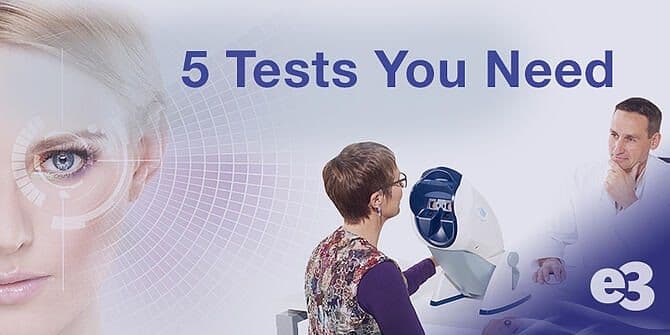5 Tests You Need on Your Vision Screener

Looking to buy a new vision screener? It’s a big decision, and if you want to ensure you get the right one, there’s a lot of research that needs to be done. The last thing you want is to spend money on equipment, only to find out it can’t do what you need it to do. With so many options on the market, it’s best to ask as many questions as possible to ensure you’re getting everything you need.
Here are five tests you should ensure a vision screener can perform before buying:
1. Acuity
Every vision screener should come with an acuity test. Have you ever had your eyes tested at the DMV and were asked to read a chart of letters and numbers of different sizes? That’s an acuity test. By having the patient read numbers and letters of different sizes and at different distances, you can accurately assess how well they can see details. This is highly important in workplaces where being able to clearly read signs from a distance is critical.
2. Depth Perception
Also known as a 3D imaging test, the depth perception test assesses whether a patient has binocular vision. The benefit to having binocular vision is it gives us a greater ability to determine distance between objects. Lacking this ability can have huge ramifications in professions that require good depth perception, so it’s a critical test you should be able to perform with your vision screener.
3. Colors
According to the Colour Blind Awareness organization, color blindness affects approximately 1 in 12 men and 1 in 200 women across the globe. There are many professions that restrict colorblind people from certain positions, including firefighting, military, and law enforcement. Being able to test for color blindness is essential for an occupational health practitioner, so having a vision screener that can effectively do so is very important.
4. Amsler gird
The Amsler gird chart can detect vision problems associated with damage to the macula (the central part of the retina) or the optic nerve. An early diagnosis means early treatment, which can help limit or slow the progression of a patient’s vision loss. It’s hard to do your job effectively if you can’t see, so this is a test that all occupational health practitioners should be able to perform.
5. Complete Visual Field
Lastly, the complete visual field analysis is something you’ll want to be able to do with your new vision screener. This test is helpful in detecting dysfunction in central and peripheral vision, which can lead to the development of medical conditions like glaucoma, stroke, pituitary disease, brain tumors, and other neurological conditions. Central and peripheral vision is essential in many jobs, particularly those that require a lot of driving (trucking, mail delivery, bus driving, etc.). If you’re dealing with patients that work in these fields, complete visual field analysis is a must-have test.
The Depisteo VT1 Vision Screener
Offering all the above tests and more, the Depisteo VT1 is a comprehensive vision screener that can be customized for fast, efficient testing. Most importantly, it seamlessly integrates with your EMR software package where you can securely transfer and store test data. It can perform a complete visual analysis in just 2-5 minutes, be adapted to wearers of progressive lenses, and it is lightweight and easy to transport.
To learn more about the Depisteo VT1 visions screener, check out our website or get in touch with your local e3 office. If you’re interested in purchasing or seeing an in-person demonstration, request a quote today!
Range of motion testing is especially useful in evaluations for insurance or disability hearings. There are many professions in which a person can’t fully perform job duties without full range of motion, so an inclinometer is essential to occupational health specialists.
By having these six essential tools, you’ll better equip yourself to effectively test your patients and determine whether or not they can work.
